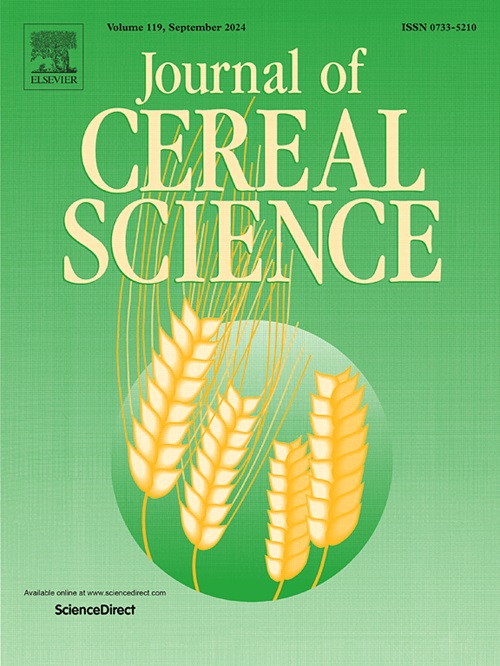磁场通过促进淀粉和面筋之间的相互作用抑制冷冻面团的变质
IF 3.9
2区 农林科学
Q2 FOOD SCIENCE & TECHNOLOGY
引用次数: 0
摘要
在此,通过评估重组面团系统中各个成分(面筋和淀粉)的贡献,确定了磁场(MF)对冷冻面团的低温保护作用。由于添加了磁场辅助冷冻面筋(MF-G)和淀粉(MF-S),面团保持了更连续的面筋网络,这表现在更长的稳定时间和更低的弱化程度。与传统冷冻组相比,MF-G 和 MF-S 组的 Ksv 和 Kq 显著增加,表明结合相互作用更强。MF-G 和 MF-S 组在加热和剪切稳定性方面都有所改善,这表现在峰值粘度和后退粘度下降,以及击穿粘度增加 15.38%。MF 处理增加了谷蛋白和淀粉之间的离子键、氢键和共价键,使热降解温度提高了 1.55 °C,热重损失降低了 2.02%。这些研究结果表明,MF 有能力保持面团的稳定性,防止冷冻引起的变质,为 MF 在冷冻面团的工业加工和生理学方面的应用提供了更多启示。本文章由计算机程序翻译,如有差异,请以英文原文为准。

Magnetic field inhibited the deterioration of frozen dough via promoting the interaction between starch and gluten
Herein, magnetic field (MF) cryoprotection of frozen dough was determined by evaluating the contribution of individual components (gluten and starch) in reconstituted dough system. Due to the addition of MF-assisted frozen gluten (MF-G) and starch (MF-S), the dough maintained a more continuous gluten network, as evidenced by a longer stability time and a lower degree of weakening. In contrast to conventional frozen groups, the Ksv and Kq of MF-G and MF-S groups showed significant increase, indicating stronger binding interactions. There was an improvement in both the MF-G and MF-S groups with respect to heating and shearing stability, as evidenced by the decreases in peak, and setback viscosities, as well as a 15.38% increase in breakdown viscosity. MF treatment increased the ionic, hydrogen, and covalent bonds between gluten and starch, resulting in an increased thermal degradation temperature of 1.55 °C and a reduction of thermogravimetric loss of 2.02%. As a result of these findings, MF has the ability to maintain dough stability against freeze-induced deterioration, providing more insights into the application of MF on the industrial processing and physiological aspects of frozen dough.
求助全文
通过发布文献求助,成功后即可免费获取论文全文。
去求助
来源期刊

Journal of Cereal Science
工程技术-食品科技
CiteScore
7.80
自引率
2.60%
发文量
163
审稿时长
38 days
期刊介绍:
The Journal of Cereal Science was established in 1983 to provide an International forum for the publication of original research papers of high standing covering all aspects of cereal science related to the functional and nutritional quality of cereal grains (true cereals - members of the Poaceae family and starchy pseudocereals - members of the Amaranthaceae, Chenopodiaceae and Polygonaceae families) and their products, in relation to the cereals used. The journal also publishes concise and critical review articles appraising the status and future directions of specific areas of cereal science and short communications that present news of important advances in research. The journal aims at topicality and at providing comprehensive coverage of progress in the field.
 求助内容:
求助内容: 应助结果提醒方式:
应助结果提醒方式:


